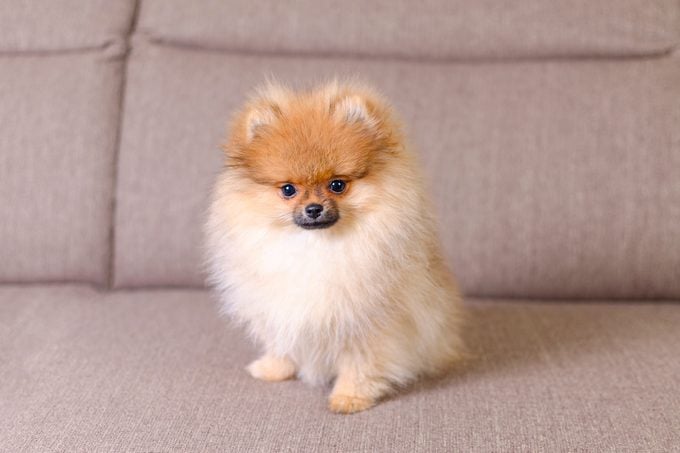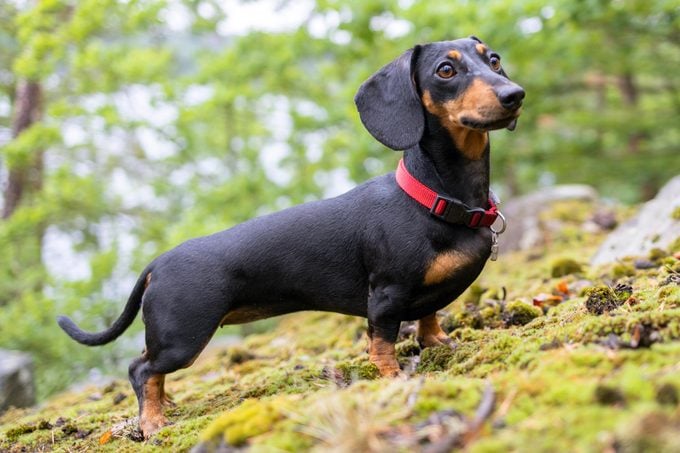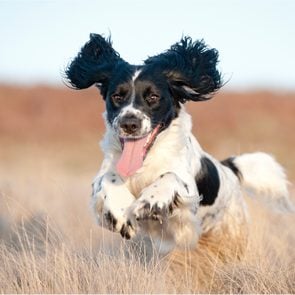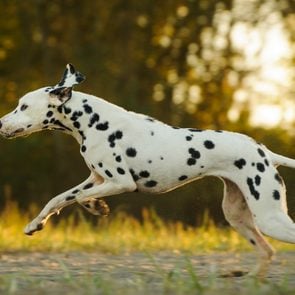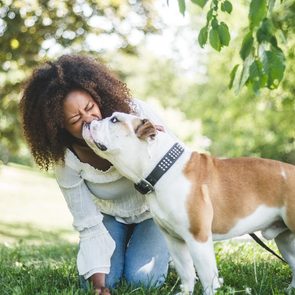15 Teacup Dog Breeds That Are Tiny and Adorable
Updated: Apr. 03, 2024
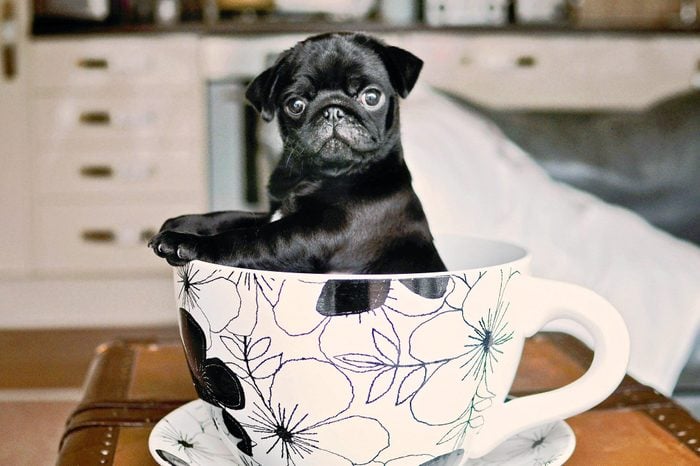
These teeny-tiny teacup dogs are too cute for their own good! But there's a lot you should know about these sweet-looking pups before bringing one home.
It’s not rocket science why breeders created teacup dogs: We’re kind of wired to fall in love with cute and tiny things. It activates a nurturing role that compels us to feed, love and protect—whether it’s a human baby or one of the cutest dog breeds. But back in the day, the smallest pup of the litter (the runt) was far from the most popular dog and often cast aside. Potential health and aesthetic issues meant the dog was probably given away.
Then something changed. “Somewhere along the line, someone realized that these little runts are actually quite cute, and people like—and will pay for—cute,” says Matthew McCarthy, DVM, veterinarian and founder of Juniper Valley Animal Hospital in Middle Village, New York.
By and large, teacup breeding is considered unethical and cruel. Virtually all small dog breeds have health issues that pop up now and then, but tiny teacups are vulnerable to a host of health problems, such as hypoglycemia, respiratory issues from underdeveloped lungs, heart defects, fragile bones and more. The American Kennel Club (AKC), an advocate of responsible dog ownership, does not endorse teacup breeders nor recognize teacups as an official breed.
Still, if you decide a teacup dog is for you, find a responsible breeder. “Visit the breeding facility and meet the mother and father dog,” advises veterinarian Alena Rice, DVM, and medical director of VCA Chicago North Animal Hospital. “Ask the breeder about their breeding history and the veterinary history of the mother, father and puppies. Ask for references from dog owners of previous litters.”
Ahead, Dr. McCarthy and Dr. Rice dive into teacup characteristics (and health concerns), and we round up the most adorable teacup pups out there.
Get Reader’s Digest’s Read Up newsletter for more pets, humor, travel, tech and fun facts all week long.
About the experts
|
What is a teacup dog?
“Most breeders consider teacup dogs less than 4 pounds and standing less than 17 inches tall,” says Dr. Rice. “Given these standards, there are six true teacup breeds: teacup Chihuahua, teacup Maltese, teacup poodle, teacup Pomeranian, teacup Yorkie and teacup shih tzu.”
“We do see teacup pups that seem to come from somewhat responsible breeders,” adds Dr. McCarthy. “These so-called hobby breeders do it because they love the breed and do a reasonable amount of genetic testing and follow up with owners to see how the pups do.” Unfortunately, the majority of teacup dogs come from the unscrupulous breeders of puppy mills.
The teacup’s breed, location and breeder determine how much a teacup dog costs, but typically, they cost between $750 and $2,000.
How are teacup dogs bred?
“Teacups come from the smallest puppies from a litter of toy breed dogs,” says Dr. Rice. And not all breeders are responsible. “Some breeders get teacup puppies from breeding sick dogs or dogs that were the runt of the litter.”
This can cause health issues in newborn pups and future generations. “If breeders continue to breed dogs with congenital issues, it can cause issues with the gene pool in that particular breed,” explains Dr. Rice.
Breeders may also choose the smallest puppies (runts) from other groups, such as a dachshund from the hound group or even a Siberian husky from the working group. Teacup breeders may breed the runts with other runts, and some runts with their own siblings or parents. Inbreeding can raise the stakes for genetic disorders and other health issues.
Puppies may also be born prematurely and later bred to create tiny teacups. Worse, breeders purposely underfeed the pups to stunt their growth. In contrast, breeding two healthy dogs that aren’t known to be related typically produces healthier and stronger litters. New genetic material can fortify the next generation’s overall physical vitality, structure and temperament.
What are the common health concerns?
Teacups are prone to medical issues due to their size and/or being born prematurely. “I have seen so-called teacup pups that are, in fact, either prematurely born puppies, or just a lot younger than their listed age,” says Dr. McCarthy. Treating tiny teacups can be challenging for dosing medicines and things like placing an intravenous catheter. Here are some other common health concerns with teacup dogs:
- Liver shunts: “Liver shunts can cause puppies to be small because they are unhealthy and cannot thrive,” says Dr. Rice. “This can cause major issues later in life and decrease the lifespan of the dog.”
- Fragile bones: Teacup dogs have very fragile bones that can break easily. “Since they are small, you may not see them and accidentally step on them. If they fall, they are also very prone to injury,” Dr. Rice says.
- Decreased immunity: Teacups are more susceptible to infectious diseases given their immature immune system, adds Dr. McCarthy.
- Blood sugar issues: According to Dr. Rice, teacups are also prone to hypoglycemia (low blood sugar).”They need to eat four to five meals per day.”
- Appetite issues: “Being so young, these pups are less likely to know how to eat, hence their poor appetites and failure to thrive,“ says Dr. McCarthy.
Teacup dogs
There’s isn’t an official breed standard or temperament guide for teacup dogs. We referred to the weights, heights and temperaments of the AKC breed standards of the parent breeds as a reference for the following 15 teacup dogs.
1. Teacup Pomeranian
A bright-eyed, smiling foxy face already makes a Pomeranian irresistibly cute. Underneath that posh exterior lies a bold and confident pooch. It’s not unheard of for a pom to harass a bigger dog. Their bark is usually enough to drive away a rival for your attention. Adoring fans call them poms or pom poms. At just 3 to 7 pounds and half a foot tall, pom poms are already on the teensy-weensy side.
2. Teacup Maltese
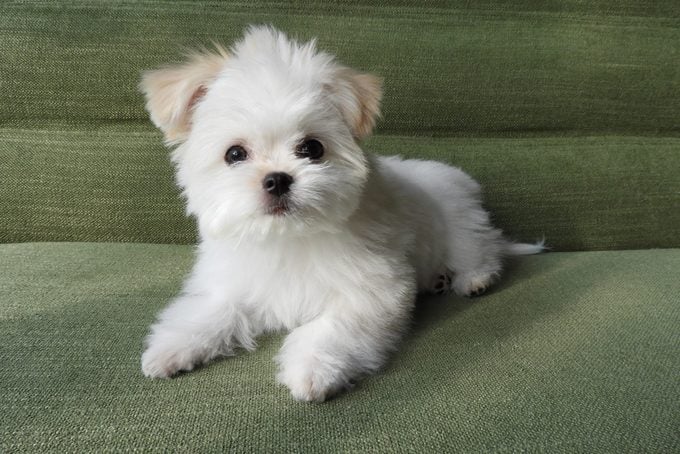
Who wouldn’t want to dote on this darling little angel? Regular size Maltese dogs top out at about 7 pounds and 7 to 8 inches tall. Those strikingly big black eyes and the gumdrop nose will lure you into a puppy coma you never want to wake up from. But you should, because Maltese don’t like riding solo. They’re the happiest spending all their free time with you, and that could be for a long time.
3. Teacup poodle
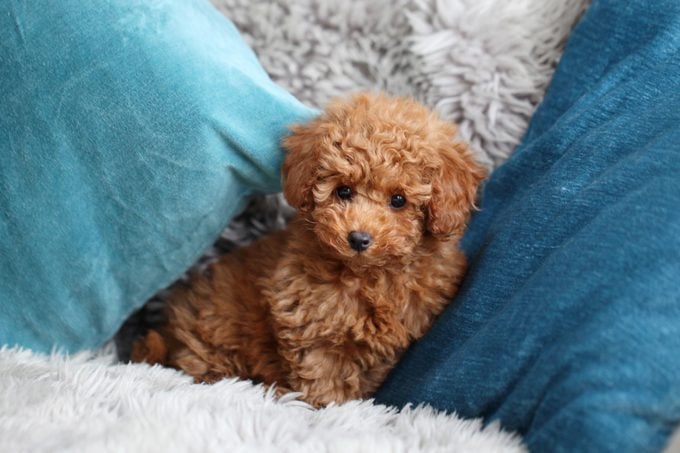
Per the AKC, poodles come in three sizes—toy, miniature and standard. The toy size is most likely to be the parent breed of a teacup because it is already pocket-size at 4 to 6 pounds and less than 10 inches tall. Toy poodles are one of the most popular dog breeds out of the 197 dog breeds the AKC recognizes. No matter the size, these poodles are so versatile they fit in with just about anyone’s lifestyle. They’re enthusiastic and curious about whatever you are doing and ready to go with you wherever you’re going. It’s not uncommon for a toy poodle to live into its late teens.
4. Teacup Yorkie
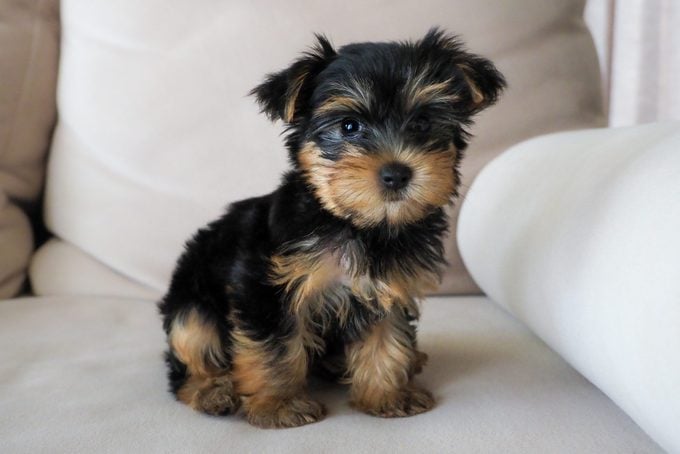
This teacup variety comes from Yorkshire terrier parents. Even though Yorkies are actually classified as a toy breed and not a terrier by the AKC, they are true terriers at heart—independent, fearless, stubborn and brave. Plus, they offer a heaping dose of face-licking and snuggling companionship. They are about 7 inches tall and weigh around 7 pounds.
5. Teacup Shih tzu
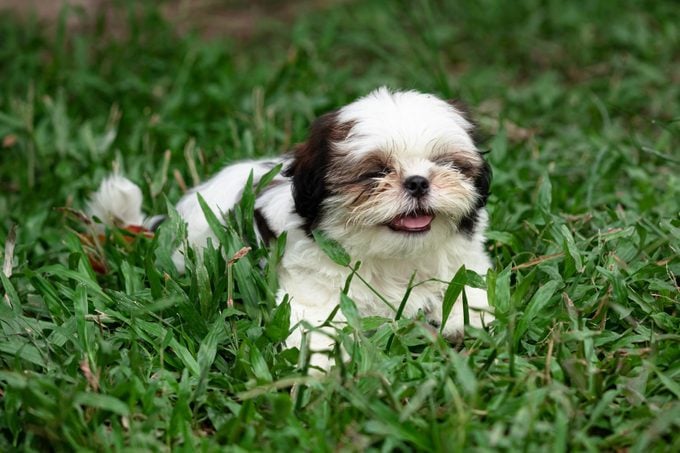
The Mandarin phrase “shih tzu” translates to little lion, a misnomer given that shih tzus register between 9 and 16 pounds and are just under 11 inches tall. Teacup shih tzus are even tinier. It doesn’t show any fierce, lion-like traits either; you’re more likely to find one of these pups always wanting to be near your side and hopping into your lap to ask with its adoring eyes for some pets. It is a dog that wants nothing more than to love and be loved and cherished.
6. Teacup pug
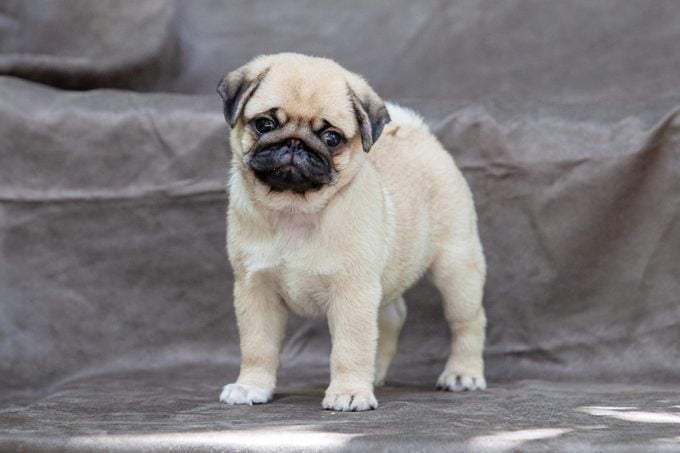
It’s just ridiculous how cute pugs are! The wrinkles, irresistible. The snorts and snoring, adorbs. Their chunky belly, cherubic. The standard pug is robust for a toy breed, at 14 to 18 pounds but just over a foot tall. It’s an ideal breed for people who prefer loafing around and sharing laughs with this witty pint-size wonder. But be aware: The pug’s short snout makes it prone to breathing problems and overheating.
7. Teacup Chihuahua
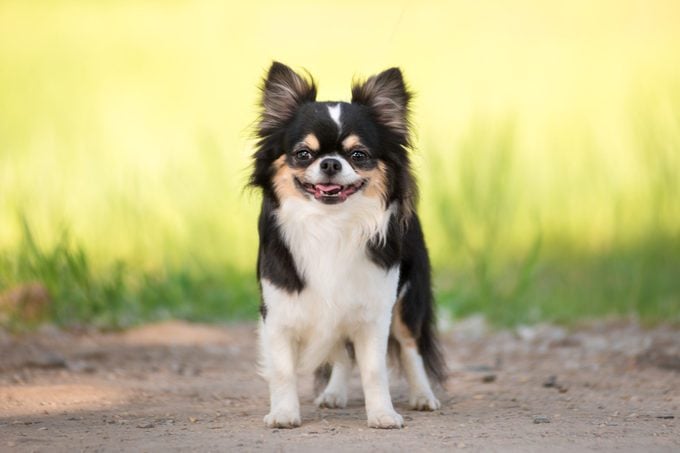
The Chihuahua’s saucy and brazen personality is well-known. Sure, they can be nippy and cranky, but gosh darn it, they are so tiny and have the sweetest eyes and face, and delightful long or short coats. They’re likely showing their teeth to compensate for their slight size. (The standard size is 5 to 8 inches tall and about 6 pounds.) Truth be told, Chihuahuas are fiercely devoted to their family and are expert watchdogs.
8. Teacup beagle
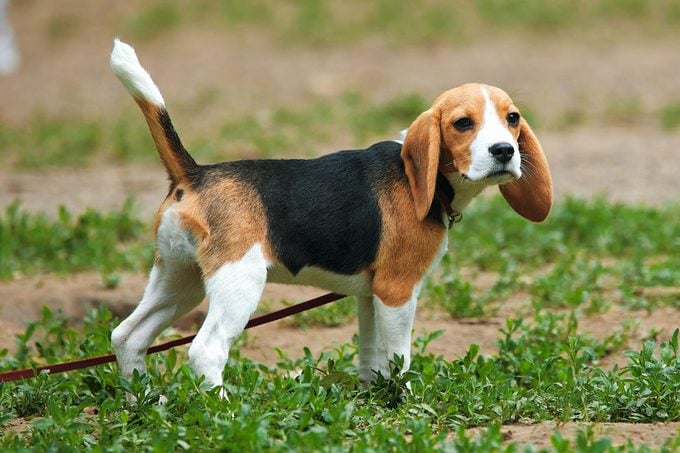
If things are just too quiet and you’re craving a talkative, cheerful and short-legged furry friend, the beagle might be the perfect match. There are two beagle varieties: One is under 13 inches and under 20 pounds, and the other is a couple of inches higher and weighs between 20 and 30 pounds. Beagles are pack dogs. They will convey their sadness with howling if they’re not with other dogs or humans. Their curiosity is scent-driven, and the urge to explore consumes them. Luckily, a teacup dog probably won’t get too far due to its size, but you’ll need to keep them in your sights.
9. Teacup French bulldog
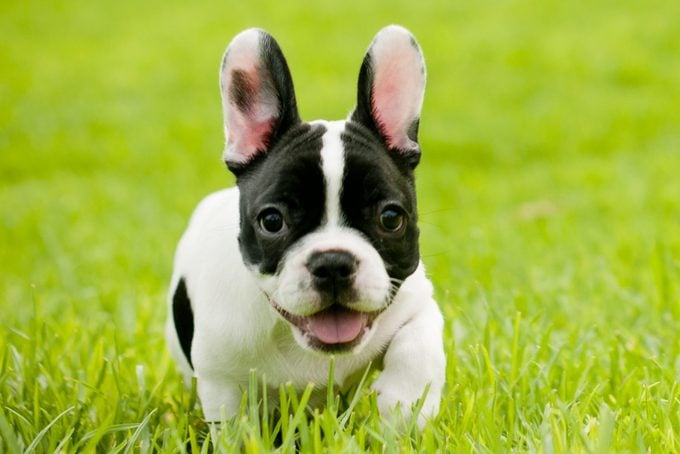
That precious wrinkled mug, the comical bat ears and the robust and compact little body are so stinkin’ cute. It’s hard to refrain from not picking one up and snuggling their chunkiness. The standard French bulldog is already on the smaller side, as height goes. It’s just about a foot tall. Weight is another matter. The Frenchie is a solid cutie at just under 30 pounds. They’re not athletes by any means but still need daily exercise and mental stimulation. They’re not much for conversation, preferring to watch and listen instead of bark, making them great apartment dogs.
10. Teacup papillon
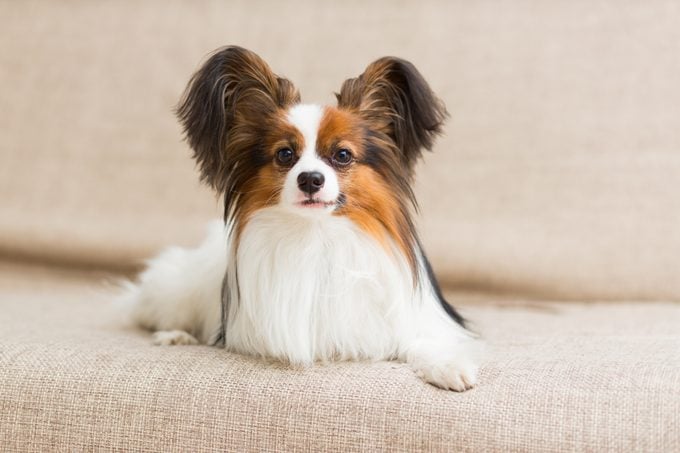
“I’m ready. Where’s the party?” These honey-pies always look like they are eager and ready to go with their feathery, perky ears and alert eyes. As a toy breed with spaniel-like coat and markings, they’re lightweights at 5 to 10 pounds and 8 to 11 inches in height. Dainty, yes. Shy, not a chance. Papillons might look like a one-person lap dog, but they are extroverts and like to mingle. They excel at dog sports and obedience competitions.
11. Teacup dachshund
In the dachshund breed, there are two sizes and three coat types to choose from—smooth, wirehaired or longhaired. The standard is around 9 inches tall and can weigh between 16 and 32 pounds. The miniature weighs up to 11 pounds and stands under 6 inches tall. The AKC assigned them to the hound group for their scent-o-riffic ability to sniff out tunneling animals, such as rabbits.
12. Teacup pekingese
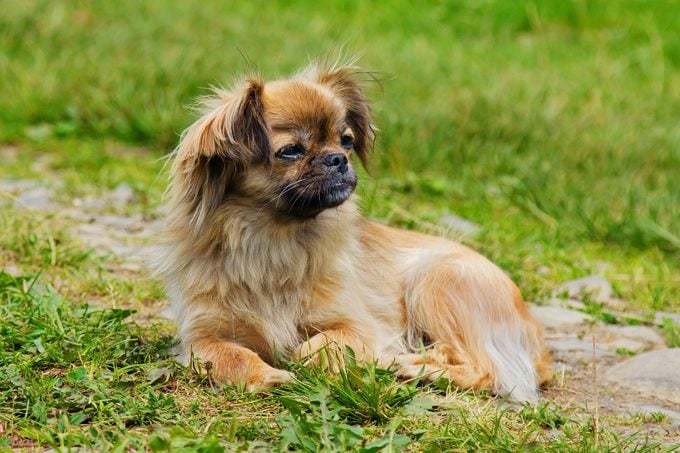
The pekingese is cute and compact, weighing up to 15 pounds and hovering around 6 to 9 inches tall. Underneath all that fur is a notoriously confident pupster. Its roots can be traced back to the ruling classes of ancient China, where it enjoyed a regal life of luxury. The entitled attitude hasn’t been lost over the years, but it balances out nicely with their charming devotion to their human.
13. Teacup Brussels Griffon
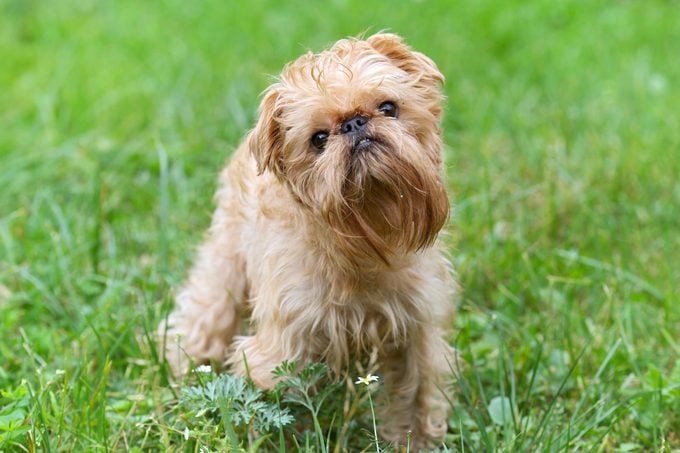
You’ll always gauge the mood of a Brussels Griffon. Their face is undeniably cute, whether it’s the trademark sweet, grumpy face, the inquisitive one or the guilty, “I-just-ate-your-slipper” face. Compact and portable, the Griff packs a lot of human-like personality into its standard frame of 8 to 10 pounds and height of 7 to 10 inches. Their coats can be smooth or rough. And while they display an air of self-importance, they are affectionate dogs that unabashedly stick to their humans like glue.
14. Teacup husky
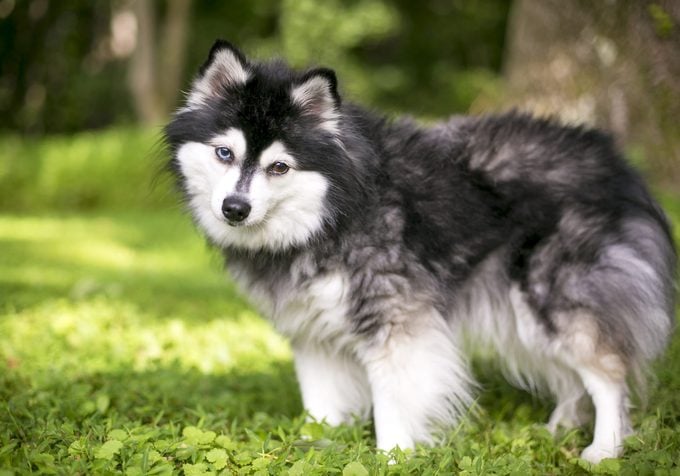
Brawny, zoomie-loving, blue-eyed, brown-eyed (or one of each), the Siberian husky is a gorgeous dog. Standard size ranges from 35 to 60 pounds, and males are on the heavier side. They stand between 20 and 24 inches tall. There are miniature husky dogs (not recognized by the AKC) that are smaller at 25 to 35 pounds, reaching 14 to 17 inches in height. Still, teacup dogs of the husky variety won’t likely fit in a teacup or even an oversize mug, for that matter, but they will be more petite.
15. Teacup bichon frise
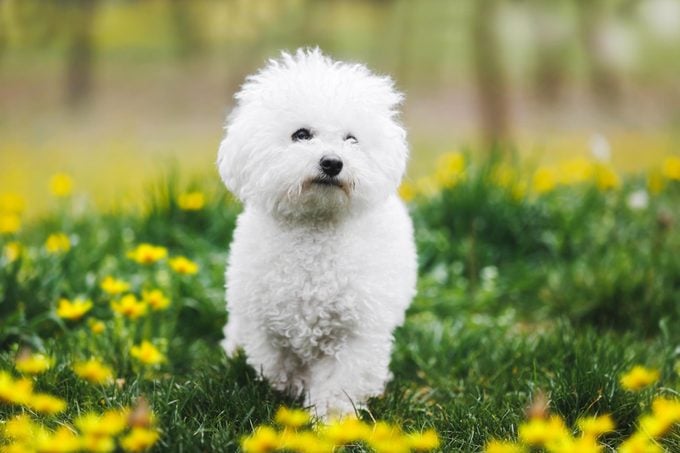
Who wouldn’t want to have a gregarious and joyful little fluff ball that lavishes unbridled affection on you? And their velvety, plush coat is relatively hypoallergenic, cutting down on the achoo factor for those who suffer from allergies. Standard size stats register between 12 and 18 pounds and 10 to 12 inches tall. Bichons prefer to be busy in lieu of sofa patrol. They make friends easily with humans and other pooches at the dog park or happily exchange smiles with strangers walking down the street.
Why trust us
At Reader’s Digest, we’re committed to producing high-quality content by writers with expertise and experience in their field in consultation with relevant, qualified experts. For this piece, Lisa Marie Conklin tapped her experience covering pet behavior and training, and then we verify all facts and data, back them with credible sourcing and revisit them over time to ensure they remain accurate and up to date. Read more about our team, our contributors and our editorial policies.
Sources:
- Matthew McCarthy, DVM, founder of Juniper Valley Animal Hospital in Middle Village, New York; interview, June 2021
- Alena Rice, DVM, medical director of VCA Chicago North Animal Hospital; interview, June 2021

